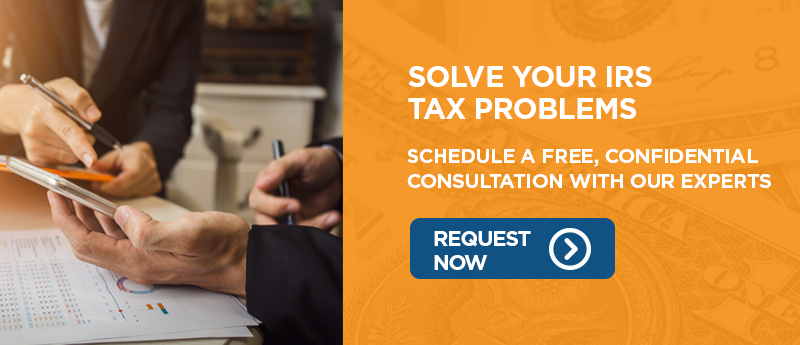
So you can’t pay your taxes. Don't start worrying about getting in trouble with the IRS yet. Did you know the IRS will let you set up a payment plan? That’s right, the IRS has lay-away! Well, not quite. You don’t get anything back when you pay your bill off except for the knowledge you are in good standing with the feds.
Let’s work through what an IRS payment plan entails, who qualifies for it, and how you can keep it.
What Is an IRS Payment Plan?
An IRS payment plan is just what it sounds like. When you owe more than you can pay at one time, a payment plan lets you split that amount up and pay part of it at a time. You make an agreement directly with the taxing agency to pay your tax bill over time.
Most plans include monthly payments. As long as you keep up, everything is hunky-dory. Your wages won’t be garnished. Your bank accounts aren’t seized. Your property remains lien-less. Not bad, right?
Sound too good to be true? Unfortunately, you will be charged penalties and interest on the remaining amount until you pay it off. Those fees can really bite.
Why Would I Need a Payment Plan?
If you cannot pay the full amount that you owe, it's not a good idea to just ignore it. In the long run, splitting up the payment is way better than not paying at all. If you don't file your returns or pay at all, you will have to pay penalty fees and risk suffering more serious consequences.
If you file but don't pay, you still get hit with a penalty.
Am I Eligible for a Payment Plan?
Most American taxpayers who owe less than $10,000 are eligible for a guaranteed installment agreement. There are requirements you have to meet:
- You owe less than $10,000
- You have filed the past five years on time and paid any income tax balance for those years
- Have not entered into an installment agreement in that time
- You agree to pay the full amount within three years and comply with tax law
- You are financially unable to pay the liability in full when due.
You can even go online to apply. Have the following information ready:
- Your name exactly as it appears on your most recent tax return
- A real email address
- Your physical address, the one you used on your most recent tax return
- Your birth date (don’t fudge, they already know)
- Your filing status (if you haven’t filed, you are in additional trouble)
- Your Social Security Number or Individual Tax ID Number
- The balance you owe
- A financial account number if you are paying by direct debit
If you need an activation code, one will be mailed to you. You will get it in five to ten business days.
Can’t I Just Use My Credit Card?
The IRS does accept credit card payments. And some people find it easier to pay some or all of their tax bill with a credit card. The IRS takes debit payments made with American Express, Mastercard, Visa, Discover, or other debit cards.
The IRS processes credit card payments through Link2Gov, WorldPay, or OfficialPayments. Each charges a convenience fee of about two percent of your total balance, so you will be paying a little bit more.
Remember that anything you charge on your credit card accrues interest until you pay it off. Still, the rate may be lower than the IRS charges for their payment plans. Check before charging.
If your bill is too big to charge to your card, you can still turn to a payment plan. If you owe more than $25,000, you have to pay with direct withdrawals from a bank account.
What Type of Payment Plans Are Available?
There is a short-term payment plan and a long-term payment plan.
The short-term plan is available for those who owe a maximum of $100,000 in combined tax, interest, and penalties. The term is 180 days or fewer. It’s free to apply online, by phone, mail, or in-person.
The long-term plan, good for 120 days or more, is available if you owe a maximum of $50,000 in combined tax, interest, and penalties. If you want a long-term plan and are paying with automatic withdrawals, you pay a fee for applying:
- $31 for applying online
- $107 to apply by phone, mail, or in-person
If you pay in a different way, it’s:
- $149 to apply online
- $225 to apply by phone, mail, or in-person
- If you are low-income, the fees are reduced to $43 and may be reimbursed in certain situations
The long-term plan is also called an installment agreement or Direct Debit Installment Agreement.
The IRS will determine how much you can afford to pay based on your income and expenses, and will also determine the time frame for the plan depending on how much of your debt you can afford to pay off monthly.
Can I Make Changes to My Plan?
Yes, but there is a fee. You can:
- Change your monthly payment amount
- Change your payment date
- Sign up for automatic withdrawals
- Reinstate a payment plan you fell behind on - there is a $10 reinstatement fee if you do it online
You can do any or all of these things IF you are not making payments through direct debit. If you reinstate or restructure an installment agreement through an OPA, you will only pay $10, as long as the agreement was established through an OPA. That’s short for Online Payment Agreement.
Can the IRS Take My Plan Away?
Yes, your installment plan can be revoked if:
- You miss payments or do not pay the total monthly payment amount
- You fail to file or pay taxes after the installment agreement is in place
- You omit or misreport information intentionally
Usually, you will get a warning before the plan is revoked.
If you cannot pay the entire amount of income tax you owe all at once, it may be a good idea to sign up an installment plan. If you're unsure what plan to get, or are not thrilled about contacting the IRS, you can work with tax professionals, like Top Tax Defenders, who can make sure you choose the best option for your unique situation.
To find out if a payment plan is right for you, contact our team today.




